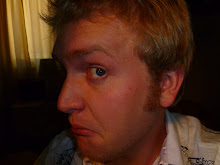 |
| Monks debating at the original Sera monastery in Tibet |
Though this entry in Buddhism and the Modern World is on the introduction of courses of training designed to produce qualified Buddhist teachers in the western world, it uses for comparison the course of study undertaken at Sera Je monastery. Sera Je was originally a monastery in Tibet, and is still going strong, but has also been built in exile in Bylakuppe, the refugee community we will be living in. I wanted to understand more about the lives of the people who make up such a large portion of this particular community, the monks and nuns living in the monasteries. The course of education at the monastery is incredible.
The entire curriculum takes 20-25 years to complete (and I complain about the 12 years to become a doctor!), granting the graduate the title of Geshe, one authorized to teach. There are five phases of curriculum, as follows:
3 years on logic, epistemology, psychology
5 years on 70 topics essential to the dharma
4 years on several topics, the main being shunyata, or the doctrine of emptiness
4 years on monastic discipline and how monastic disciplinary codes and actions reflect Buddhist ethics
4 years on the Abhidharma, the more esoteric teachings - cosmology, meditation states, etc.
In Tibet, the monks spent 6 or more hours a day debating. In Bylakuppe, there is a 2 hour debate session in the morning and a 2 hour debate session in the evening. Geshe Jampa Gyatso, a prominent teacher of Buddhism, said, "In a monastery, it is said that 25% of one's understanding of the subject comes from the teacher's lecture, 25% from self-study, and 50% from debating" (p. 239). Debating is an exciting activity, and becomes a sport of sorts for the monks. They learn to take all sides of an argument and pick them apart, using a vast memorized corpus of scripture and commentary, looking for logical inconsistencies and trying to find ways to disprove or problematize them. It is in this way that the truths of the dharma come into sharp focus, for the monks spend a large chunk of those 20-25 years testing them rigorously. This reminds me of B.H. Roberts' approach to Book of Mormon scholarship - his belief was that the Book of Mormon was absolutely from God, and therefore would stand up to all the hard questions you could ask about it (by the way, I think he was right). B.H. Roberts' material, humorously enough, became one of the main sources for anti-Mormon material, espoused by folks not realizing the position of faith he had taken and the subsequent scholarship that answered many of the questions and transformed and sharpened others. The Buddhists seek to do this intense testing of faith as a monastic body, which is a powerful way to confirm the value of the dharma.
Another interesting point is that the monks begin formal tantra study only after the title of Geshe has been received. Tantra is considered so powerful and dangerous that only the most accomplished practitioners are deemed worthy to use it.
Here's a video of a debate at Sera monastery in Tibet. Remember, these guys are really on the same side. It looks like fun. :)
You'll figure out the all the clapping noises about halfway through.

No comments:
Post a Comment